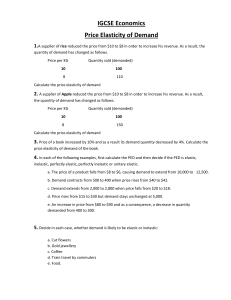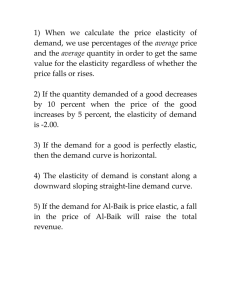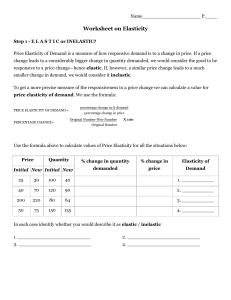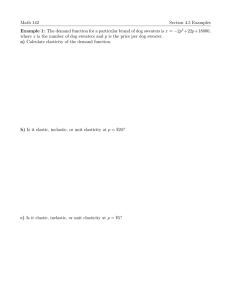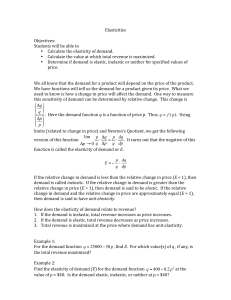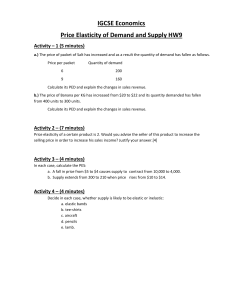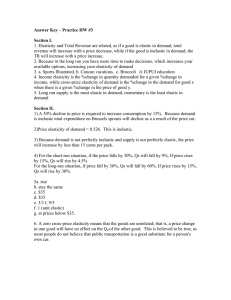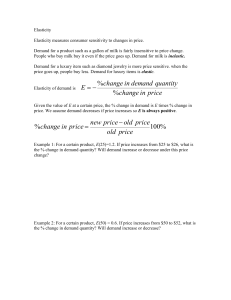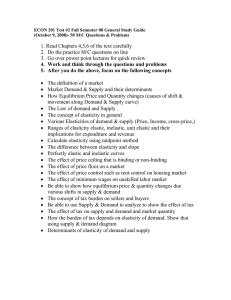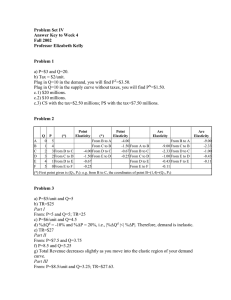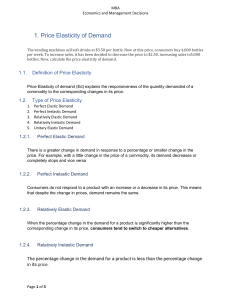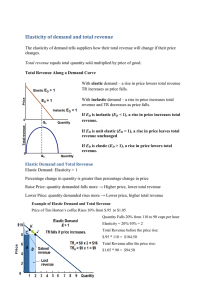5.3 Application of the Natural Logarithm Function to Economics
advertisement
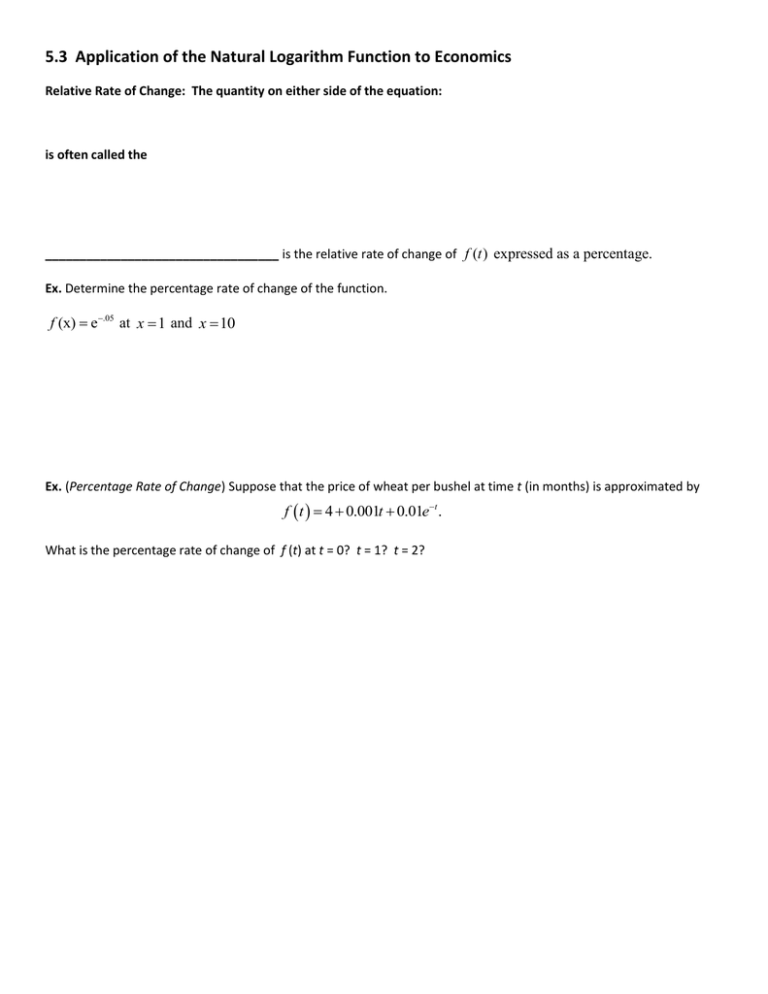
5.3 Application of the Natural Logarithm Function to Economics Relative Rate of Change: The quantity on either side of the equation: is often called the __________________________________ is the relative rate of change of f (t ) expressed as a percentage. Ex. Determine the percentage rate of change of the function. f (x) e.05 at x 1 and x 10 Ex. (Percentage Rate of Change) Suppose that the price of wheat per bushel at time t (in months) is approximated by f t 4 0.001t 0.01et . What is the percentage rate of change of f (t) at t = 0? t = 1? t = 2? Elasticity of Demand The elasticity of demand E ( p) at price p for the demand function q f ( p ) is defined to be The change in revenue is in the opposite direction of the change in price when demand is elastic and in the same direction when demand is inelastic. Ex. For each demand function, find E ( p) and determine if demand is elastic or inelastic (or neither) at the indicated price. (a) q 600e0.2 p , p 10 77 (b) q 2 3, p 1 p Ex. (Elasticity of Demand) A subway charges 65 cents per person and has 10,000 riders each day. The demand function for the subway is q 2000 90 p . (a) Is demand elastic or inelastic at p = 65? (b) Should the price of a ride be raised or lowered in order to increase the amount of money taken in by the subway?


